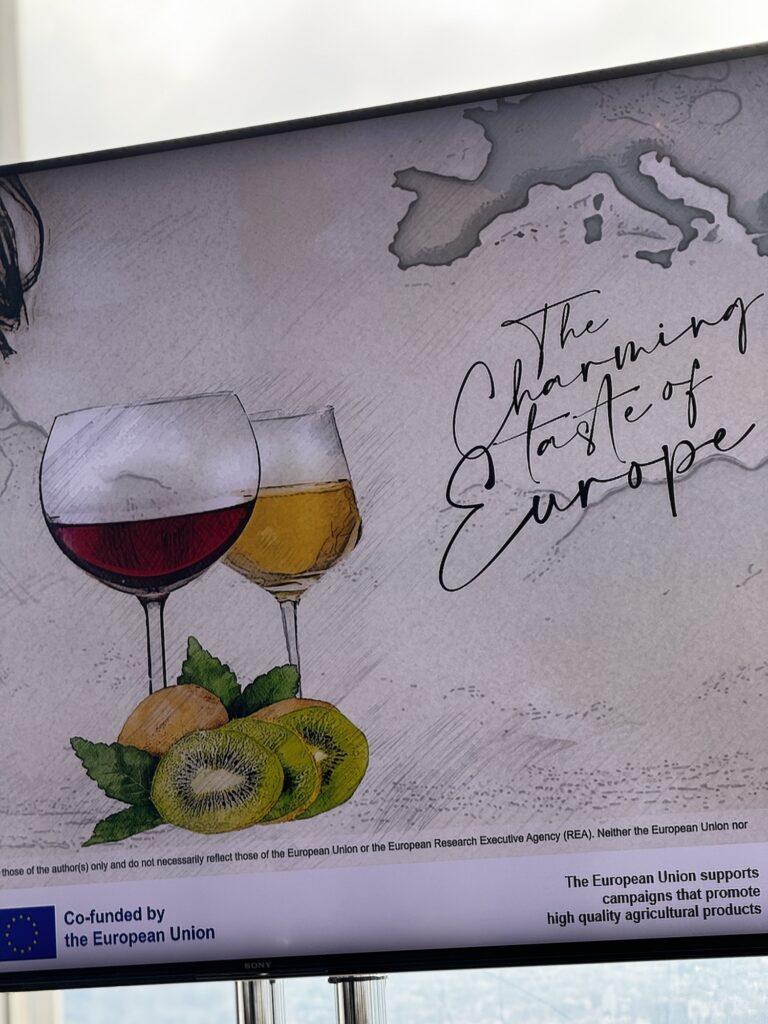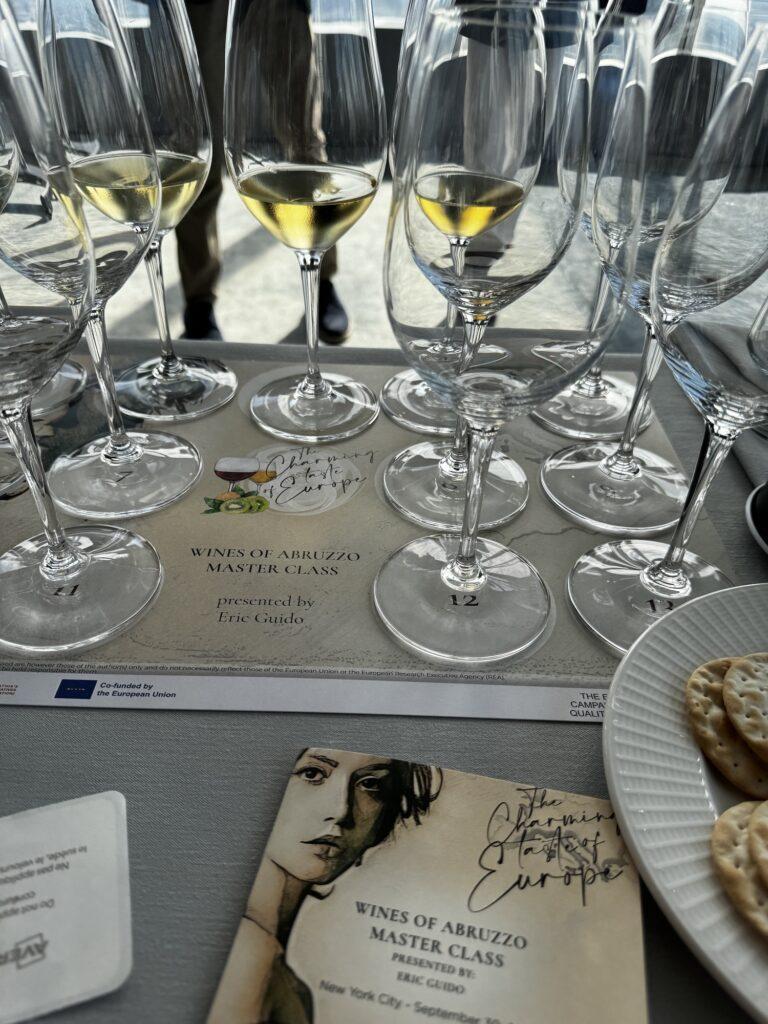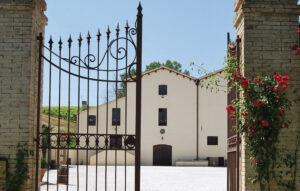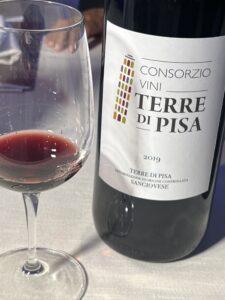Abruzzo Wines from Italy

Excellent wine talk today organized by IEEM and delivered by Eric Guido at the gorgeous Manhatta restaurant in the Financial District. Though I’d visited Abruzzo a few times over the length of my career in wine, Eric’s talk brought new excitement! I envied the way he was able to visually recreate those ancient cellars, the talks with producers in the vineyard, and the overall magical aura of Abruzzo!
That said, with these lecture notes I hope to recreate a ‘visit to Abruzzo’ for you and hope you can see it yourself soon and visit your wines.
Abruzzo

When one thinks of Italian wines, regions like Tuscany and Piedmont often spring to mind, overshadowing the hidden gem of Abruzzo.
Located between the Apennine Mountains and the Adriatic Sea, Abruzzo offers a unique terroir that excels in producing exquisite wines from the Trebbiano and Montepulciano grapes. The region’s diverse soils, climatic conditions, and centuries-old wine-making practices converge to create bottles that captivate both newcomers and experienced connoisseurs.
This article explores what makes Abruzzo’s wines so extraordinary, focusing on the factors that elevate Trebbiano and Montepulciano grapes to their eminent status, with an emphasis on traditional methods, modern innovations, and the character of the wines.
The Geography and Climate of Abruzzo: A Perfect Balance
Abruzzo’s geography is one of its most defining features. Some people describe it as an “equal opportunity to ski or swim” as the region is framed by the Apennine Mountains to the west and the Adriatic Sea to the east.
This unique positioning plays a significant role in the microclimates that exist within Abruzzo, offering a perfect balance for viticulture.
The Apennines provide high altitudes and cooling breezes, which are crucial for the diurnal temperature variation—the difference between day and night temperatures. During Eric’s talk, we could taste this diurnal difference in the racy acidity of the white wine, and its rich flavors – also holding true of the well-balanced reds.
This variation is vital in developing the grapes’ aromatic compounds and maintaining a balance of acidity and sugar levels. Cooler nights preserve the grapes’ acidity, while the warm days ensure they ripen fully, achieving the perfect harmony between freshness and flavor intensity.
Similarly, the Adriatic Sea impacts the climate by moderating temperatures and providing humidity. The sea breezes help reduce the risk of fungal diseases, ensuring healthy grapes.
The combination of mountain and maritime influences creates a diverse range of microclimates within a relatively small area, allowing for the cultivation of both white and red grape varieties to their fullest potential.
Diverse Soils: The Foundation of Terroir

Eric explained that the soils of Abruzzo are as varied as its climate, contributing to the complexity and quality of its wines. One of the prominent soil types in the region is limestone, known for its excellent drainage properties. Limestone soils encourage deep root growth, allowing vines to access water and nutrients during dry periods, which is essential for balanced grape development.
Wines from limestone-rich soils often exhibit pronounced minerality, a characteristic highly prized by wine enthusiasts. I saw this in several of the white wines of the tasting. Eric described a colleague of his describing it as drinking “liquid minerals.”
Clay is another significant component of Abruzzo’s soils. Clay soils retain moisture well, providing a consistent water supply to the vines. This is particularly beneficial for the Montepulciano grape, which thrives in these conditions, producing wines with rich, robust flavors and well-structured tannins.
The interplay between limestone and clay across different vineyards adds layers of complexity to the wines, giving each bottle a distinct sense of place.
Trebbiano: The Renaissance of an Underrated Grape
Trebbiano has long been considered a workhorse grape, known more for its high yields than for producing quality wines. However, recent years have seen a renaissance for Trebbiano in Abruzzo, as winemakers adopt more meticulous approaches to viticulture and vinification.
By focusing on lower yields and attentive vineyard management, producers are transforming Trebbiano into a grape that can produce wines of remarkable depth and character.
Characteristics and Flavor Profile

Trebbiano from Abruzzo, often referred to as Trebbiano d’Abruzzo, can display an impressive range of flavors. On the nose, expect aromas of citrus, green apples, and white flowers, often accompanied by subtle hints of almond and herbs.
The palate typically offers a refreshing acidity, with flavors that echo the aromatics—bright citrus, crisp apple, and a lingering mineral finish. These wines are versatile, pairing beautifully with seafood, light pasta dishes, and fresh salads, making them a staple for any wine lover.
Montepulciano: The Pride of Abruzzo
Montepulciano is the flagship red grape of Abruzzo, known for producing wines that are both approachable and age-worthy. The grape benefits immensely from the region’s diverse microclimates and soil compositions. Winemakers in Abruzzo have refined their practices to get the best out of Montepulciano, focusing on optimal harvesting times and gentle handling of the grapes to preserve their natural flavors and structures.
Montepulciano d’Abruzzo wines are celebrated for their rich, dark fruit flavors, including black cherry, plum, and blackberry. These wines often have secondary notes of chocolate, tobacco, and spices, thanks to the careful use of oak aging. On the palate, Montepulciano offers a full-bodied experience with balanced acidity and firm but smooth tannins. Whether enjoyed young or after several years of aging, these wines display a remarkable depth and complexity, making them a favorite among red wine aficionados.

The Human Touch: Tradition meets Innovation
Traditional Techniques
Abruzzo’s winemaking heritage is steeped in tradition, with many producers still adhering to age-old methods. These include hand-harvesting, natural fermentation, and minimal intervention in the cellar. Such practices ensure that the wines remain true to their origins, preserving the unique characteristics of the Terroir.
One notable technique is the aging of wines in amphorae—large, clay vessels that have been used for centuries. This method allows the wines to breathe without imparting strong oak flavors, resulting in a pure expression of the grape and terroir. Amphorae aging is particularly beneficial for Trebbiano, enhancing its minerality and crispness.
Modern Innovations
While tradition plays a crucial role, modern winemaking techniques are also embraced to enhance quality. Precision viticulture, temperature-controlled fermentations, and sustainable farming practices are increasingly common in Abruzzo. For instance, some winemakers are experimenting with small casks for aging Montepulciano to add subtle oak complexity without overwhelming the fruit flavors.
Producers are also exploring organic and biodynamic farming methods, promoting soil health and biodiversity. These practices not only improve the quality of the grapes but also ensure that the vineyards remain sustainable for future generations. This blend of tradition and innovation is allowing Abruzzo to compete on the global stage, gaining recognition for the exceptional quality of its wines.
Eminent Producers: Guardians of Quality
Emidio Pepe
All of the wines deserve special mention, but as Emidio Pepe was a pioneer – and I’ve been lucky enough to meet him, his daughters, and his grand-aughter who now runs the winery a number of time, I’ll single him out.
His is one of the most respected names in Abruzzo is Emidio Pepe, renowned for his holistic approach to winemaking. Pepe’s wines are crafted with minimal intervention, allowing the grape’s natural characteristics to shine. His Montepulciano d’Abruzzo is a benchmark for the variety, known for its longevity and complexity. Pepe also excels with Trebbiano, producing age-worthy whites that defy the conventional perceptions of the grape.
A Call to Discover Abruzzo
If you have yet to explore the wines of Abruzzo, now is the time. From the elegant, mineral-driven Trebbiano to the rich, robust Montepulciano, Abruzzo offers wines that are as diverse and compelling as the region itself. Whether you are a newcomer to the world of wine or a seasoned expert, Abruzzo’s offerings promise to delight and surprise, providing a taste of Italy’s untapped potential.
Cheers!




